Tìm x, y biết: 2x = 3y và x2 - y2 = 25
Hãy nhập câu hỏi của bạn vào đây, nếu là tài khoản VIP, bạn sẽ được ưu tiên trả lời.


a: \(\dfrac{\left(x+1\right)}{x^2+2x-3}=\dfrac{\left(x+1\right)}{\left(x+3\right)\cdot\left(x-1\right)}=\dfrac{\left(x+1\right)\left(x+2\right)\left(x+5\right)}{\left(x+3\right)\left(x-1\right)\left(x+2\right)\left(x+5\right)}\)
\(\dfrac{-2x}{x^2+7x+10}=\dfrac{-2x}{\left(x+2\right)\left(x+5\right)}=\dfrac{-2x\left(x+3\right)\left(x-1\right)}{\left(x+2\right)\left(x+5\right)\left(x+3\right)\left(x-1\right)}\)
b: \(\dfrac{x-y}{x^2+xy}=\dfrac{x-y}{x\left(x+y\right)}=\dfrac{y^2\left(x-y\right)}{xy^2\left(x+y\right)}\)
\(\dfrac{2x-3y}{xy^2}=\dfrac{\left(2x-3y\right)\left(x+y\right)}{xy^2\left(x+y\right)}\)
c: \(\dfrac{x-2y}{2}=\dfrac{\left(x-2y\right)\left(x-xy\right)}{2\left(x-xy\right)}\)
\(\dfrac{x^2+y^2}{2x-2xy}=\dfrac{x^2+y^2}{2\left(x-xy\right)}\)

a) Ta có: \(\dfrac{2x}{3}=\dfrac{3y}{4}=\dfrac{4z}{5}\)
nên \(\dfrac{x}{\dfrac{3}{2}}=\dfrac{y}{\dfrac{4}{3}}=\dfrac{z}{\dfrac{5}{4}}\)
Áp dụng tính chất của dãy tỉ số bằng nhau, ta được:
\(\dfrac{x}{\dfrac{3}{2}}=\dfrac{y}{\dfrac{4}{3}}=\dfrac{z}{\dfrac{5}{4}}=\dfrac{x+y+z}{\dfrac{3}{2}+\dfrac{4}{3}+\dfrac{5}{4}}=\dfrac{49}{\dfrac{49}{12}}=12\)
Do đó:
\(\left\{{}\begin{matrix}\dfrac{2x}{3}=12\\\dfrac{3y}{4}=12\\\dfrac{4z}{5}=12\end{matrix}\right.\Leftrightarrow\left\{{}\begin{matrix}2x=36\\3y=48\\4z=60\end{matrix}\right.\Leftrightarrow\left\{{}\begin{matrix}x=18\\y=16\\z=20\end{matrix}\right.\)
Vậy: (x,y,z)=(18;16;20)
b) Đặt \(\dfrac{x}{5}=\dfrac{y}{3}=k\)
\(\Leftrightarrow\left\{{}\begin{matrix}x=5k\\y=3k\end{matrix}\right.\)
Ta có: \(x^2-y^2=4\)
\(\Leftrightarrow\left(5k\right)^2-\left(3k\right)^2=4\)
\(\Leftrightarrow16k^2=4\)
\(\Leftrightarrow k\in\left\{\dfrac{1}{2};-\dfrac{1}{2}\right\}\)
Trường hợp 1: \(k=\dfrac{1}{2}\)
\(\Leftrightarrow\left\{{}\begin{matrix}x=5k=5\cdot\dfrac{1}{2}=\dfrac{5}{2}\\y=3k=3\cdot\dfrac{1}{2}=\dfrac{3}{2}\end{matrix}\right.\)
Trường hợp 2: \(k=-\dfrac{1}{2}\)
\(\Leftrightarrow\left\{{}\begin{matrix}x=5k=5\cdot\dfrac{-1}{2}=\dfrac{-5}{2}\\y=3k=3\cdot\dfrac{-1}{2}=\dfrac{-3}{2}\end{matrix}\right.\)
Vậy: \(\left(x,y\right)\in\left\{\left(\dfrac{5}{2};\dfrac{3}{2}\right);\left(-\dfrac{5}{2};-\dfrac{3}{2}\right)\right\}\)
a)
Theo tính chất của dãy tỉ số bằng nhau, ta có :
\(\dfrac{x}{\dfrac{3}{2}}=\dfrac{y}{\dfrac{4}{3}}=\dfrac{z}{\dfrac{5}{4}}=\dfrac{x+y+z}{\dfrac{3}{2}+\dfrac{4}{3}+\dfrac{5}{4}}=\dfrac{49}{\dfrac{49}{12}}=12\)
Suy ra :
\(x=\dfrac{12.3}{2}=18\\ y=\dfrac{12.4}{3}=16\\ z=\dfrac{12.5}{4}=15\)
b)
\(x=\dfrac{y}{3}.5=\dfrac{5y}{3}\\ x^2-y^2=4\\ \Leftrightarrow\left(\dfrac{5y}{3}\right)^2-y^2=4\\ \Leftrightarrow\dfrac{16y^2}{9}=4\Leftrightarrow y=\pm\dfrac{3}{2} \)
Với $y = \dfrac{3}{2}$ thì $x = \dfrac{5}{2}$
Với $y = \dfrac{-3}{2}$ thì $x = \dfrac{-5}{2}$
c)
\(\dfrac{x}{y+z+1}=\dfrac{y}{z+x+1}=\dfrac{z}{x+y-2}=\dfrac{x+y+z}{2x+2y+2z}=\dfrac{1}{2}\)
Suy ra :
\(2x=y+z+1\Leftrightarrow y+z=2x-1\)
Mặt khác :
\(x+y+z=\dfrac{1}{2}\Leftrightarrow x+2x-1=\dfrac{1}{2}\Leftrightarrow x=\dfrac{1}{2}\)
\(2y=x+z+1=z+\dfrac{3}{2}\)
Mà \(y+z=0\Leftrightarrow z=-y\)
nên suy ra: \(y=\dfrac{1}{2};z=-\dfrac{1}{2}\)

Ta có
(I): 4 x 2 + 4 x – 9 y 2 + 1 = ( 4 x 2 + 4 x + 1 ) – 9 y 2 = ( 2 x + 1 ) 2 – ( 3 y ) 2
= (2x + 1 + 3y)(2x + 1 – 3y) nên (I) đúng
Và
(II):
5 x 2 – 10 x y + 5 y 2 – 20 z 2 = 5 ( x 2 – 2 x y + y 2 – 4 z 2 ) = 5 [ ( x – y ) 2 – ( 2 z ) 2 ]
= 5(x – y – 2z)(x – y + 2z) nên (II) sai
Đáp án cần chọn là: A

\(a,=5\left(x-y\right)+a\left(x-y\right)=\left(5+a\right)\left(x-y\right)\\ b,=a\left(x+y\right)+b\left(x+y\right)=\left(a+b\right)\left(x+y\right)\\ c,=x\left(x+1\right)+a\left(x+1\right)=\left(x+a\right)\left(x+1\right)\\ d,Sửa:x^2y+xy^2-3x-3y=xy\left(x+y\right)-3\left(x+y\right)=\left(xy-3\right)\left(x+y\right)\\ e,=xy\left(x+1\right)-\left(x+1\right)=\left(xy-1\right)\left(x+1\right)\\ f,=x^2-4=\left(x-2\right)\left(x+2\right)\\ g,=\left(x+3\right)^2-y^2=\left(x-y+3\right)\left(x+y+3\right)\\ h,=\left(x+5\right)^2-y^2=\left(x-y+5\right)\left(x+y+5\right)\\ i,=\left(x-4\right)^2-24y^2=\left(x-2\sqrt{6}y-4\right)\left(x+2\sqrt{6}y+4\right)\)

a) \(\dfrac{1}{x^3-8}=\dfrac{1}{\left(x-2\right)\left(x^2+2x+4\right)}=\dfrac{2}{2\left(x-2\right)\left(x^2+2x+4\right)}\)
\(\dfrac{3}{4-2x}=\dfrac{-3}{2\left(x-2\right)}=\dfrac{-3\left(x^2+2x+4\right)}{2\left(x-2\right)\left(x^2+2x+4\right)}\)
b) \(\dfrac{x}{x^2-1}=\dfrac{x}{\left(x+1\right)\left(x-1\right)}=\dfrac{x\left(x+1\right)}{\left(x+1\right)^2\left(x-1\right)}\)
\(\dfrac{1}{x^2+2x+1}=\dfrac{1}{\left(x+1\right)^2}=\dfrac{x-1}{\left(x+1\right)^2\left(x-1\right)}\)
c) \(\dfrac{1}{x+2}=\dfrac{\left(x-2\right)^2}{\left(x+2\right)\left(x-2\right)^2}\)
\(\dfrac{1}{x^2-4x+4}=\dfrac{1}{\left(x-2\right)^2}=\dfrac{x+2}{\left(x+2\right)\left(x-2\right)^2}\)
\(\dfrac{5}{2-x}=\dfrac{-5}{x-2}=\dfrac{-5\left(x+2\right)\left(x-2\right)}{\left(x+2\right)\left(x-2\right)^2}\)
d) \(\dfrac{1}{3x+3y}=\dfrac{1}{3\left(x+y\right)}=\dfrac{\left(x-y\right)^2}{3\left(x+y\right)\left(x-y\right)^2}\)
\(\dfrac{2x}{x^2-y^2}=\dfrac{2x}{\left(x+y\right)\left(x-y\right)}=\dfrac{6x\left(x-y\right)}{3\left(x+y\right)\left(x-y\right)^2}\)
\(\dfrac{x^2-xy+y^2}{x^2-2xy+y^2}=\dfrac{x^2-xy+y^2}{\left(x-y\right)^2}=\dfrac{3\left(x^2-xy+y^2\right)\left(x+y\right)}{3\left(x+y\right)\left(x-y\right)^2}=\dfrac{3\left(x^3+y^3\right)}{3\left(x+y\right)\left(x-y\right)^2}\)





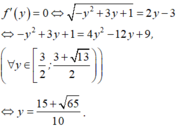
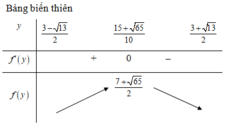
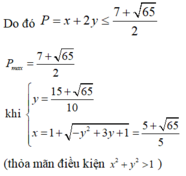




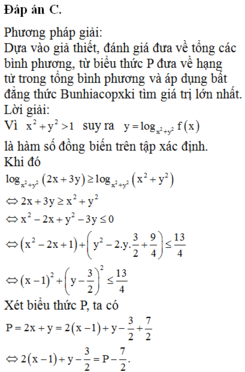
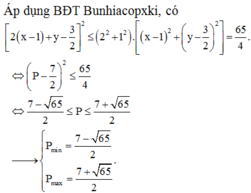
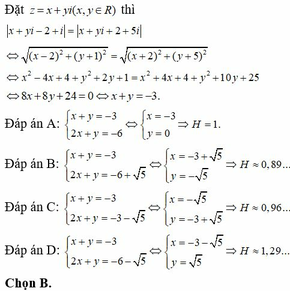
Ta có: x2 -y2 = 25
=) (x - y)2 = 25
=) (x - y)2 =52
=) x - y = 5
Ta lại có: 2x = 3y
=) \(\frac{x}{3}=\frac{y}{2}\)
=) \(\frac{x-y}{3-2}=\frac{5}{1}=5\)
=) x = 3 . 5 = 15
=) y = 2 . 5 = 10
Ta có\(2x=3y=>\frac{x}{3}=\frac{y}{2}\)
x2-y2=25
Áp dụng tính chất dãy tỉ số pằng nhau ta có
\(\frac{x}{3}=\frac{y}{2}=\frac{x^2}{3^2}=\frac{y^2}{2^2}\frac{x^2-y^2}{9-4}=\frac{25}{5}=5\)
suy ra
\(\frac{x}{3}=5=>x=15\)
\(\frac{y}{2}=5=>y=10\)
Vậy số x,y lần lượt là 15 ; 10